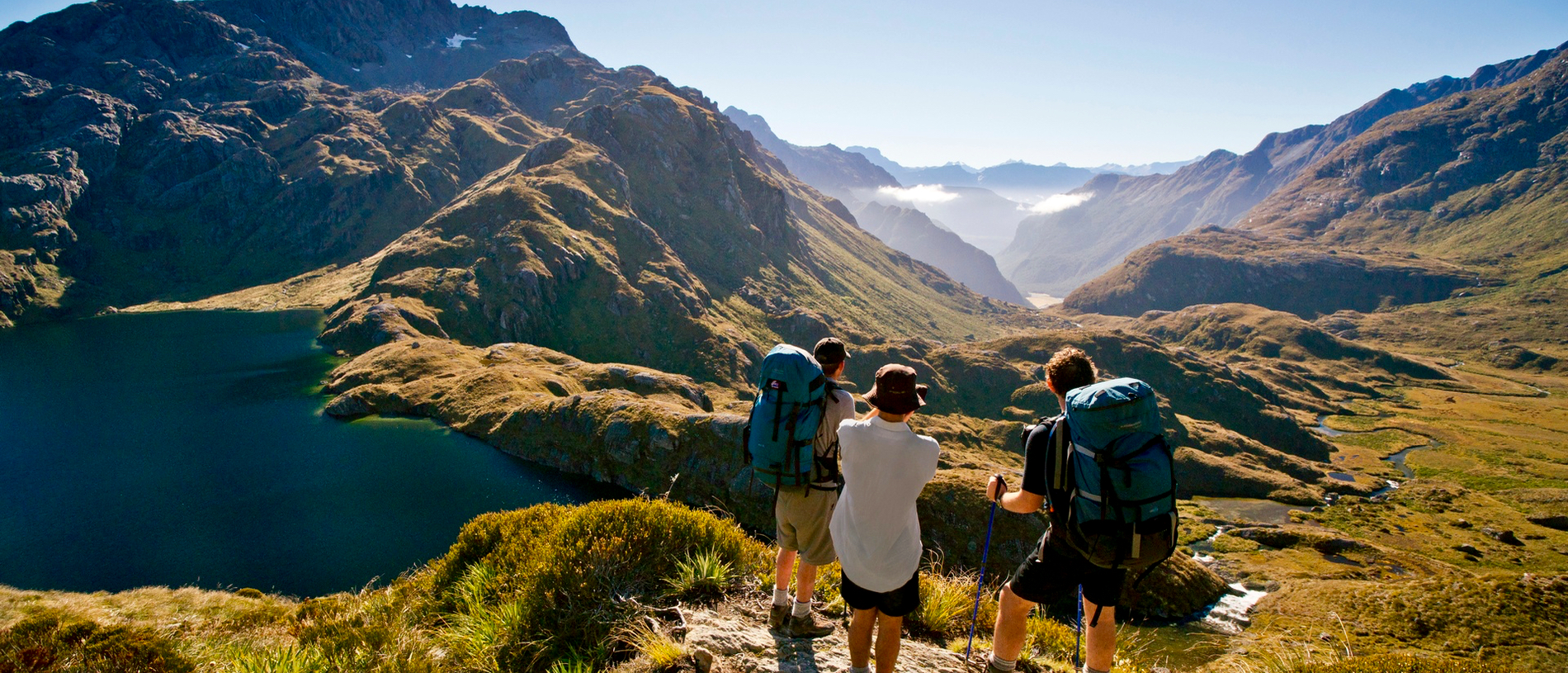
The Routeburn Track: over the hills and far away
The Routeburn Track is the ultimate alpine adventure, taking walkers through ice-carved valleys and below the majestic peaks of the Southern Alps Ka Tiritiri o te Moana.
The Milford Track has been thrilling hikers for more than 150 years and the scenery is as perfect as ever, complete with valleys carved by glaciers, ancient rainforests and cascading waterfalls.
The is probably the best-known Great Walk in New Zealand, the Milford Track retraces the steps of early explorers. The walk takes its name from the spectacular Milford Sound, where it terminates. Māori named the sound Piopiotahi, meaning a single piopio – the native thrush, which is now extinct. Māori used the route to travel to Milford Sound Piopiotahi to collect pounamu greenstone, but the first European crossing was not made until the 1880s.

In 1888, Donald Sutherland and a team were commissioned to cut a track up the Arthur Valley as far as Sutherland Falls, while surveyor Quinton Mackinnon was employed to forge a path up the Clinton Valley from the head of Lake Te Anau. Mackinnon and his companion Ernest Mitchell reached the head of the Clinton Valley in October 1888, crossed the pass which now bears his name and continued down the Arthur Valley on the track cut by Sutherland.
Mackinnon became the first Milford Track guide. He ferried walking parties in his yacht Juliet to the head of Lake Te Anau, then guided them up over the pass to Lake Ada where another boat ferried them to Sutherland’s accommodation house at Milford Sound.
The track acquired its nickname of ‘the finest walk in the world’ in 1908 when the description appeared in an article in the London Spectator.
Today the track still begins with a boat cruise from Te Anau Downs, then passes through beautiful beech forest along the banks of the Clinton River. On the second day, a gradual climb follows the Clinton to its source, Lake Mintaro, at the base of the renowned Mackinnon Pass.

Past Hīrere Falls you get your first view of Mackinnon Pass and the impressive Pompolona ice field. Walkers are dwarfed by the sheer scale of the rock walls towering above on either side as they walk up the Clinton Valley and pass through changing vegetation as they climb higher towards Mintaro Hut.
The track then climbs Mackinnon Pass to reach the memorial to MacKinnon. It then drops steadily through an attractive alpine garden to the valley floor, passing several waterfalls along the Roaring Burn River, on the way to Dumpling Hut, before following the Arthur River to the historic Boatshed.
Fiordland’s many streams, rivers and waterfalls are especially spectacular after rainfall. It’s well worth the side trip from Quintin Shelter to admire the Sutherland Falls, which drop 580m from Lake Quill.
